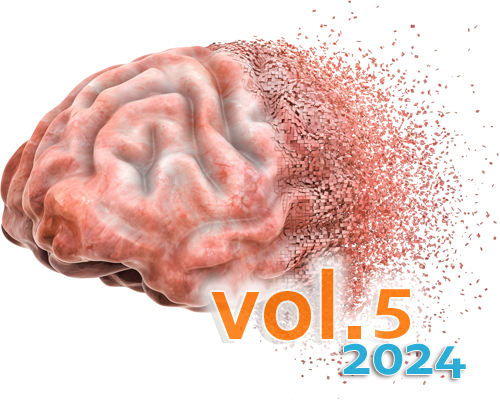Neurodegeneration: 2024 update
DOI:
https://doi.org/10.17879/freeneuropathology-2024-5848Keywords:
Neurodegeneration, Neuropathology, Aging, Alzheimer’s disease, Tauopathy, α-synucleinopathy, TDP-43 proteinopathy, Traumatic brain injuryAbstract
This review highlights a collection of both diverse and highly impactful studies published in the previous year selected by the author from the neurodegenerative neuropathology literature. As with previous reviews in this series, the focus is, to the best of my ability, to highlight human tissue-based experimentation most relevant to experimental and clinical neuropathologists. A concerted effort was made to balance the selected studies across neurodegenerative disease categories, approaches, and methodologies to capture the breadth of the research landscape. These studies employ a range of classical and state-of-the-art methodologies ranging from clinical pathoanatomical correlative studies to single-cell RNA sequencing, artificial intelligence, and patient-derived human induced pluripotent stem cell models. Key studies include demonstration of the earliest pathological changes in young patients with repetitive head impacts (RHI), elucidation of the longitudinal trajectory of extrapyramidal symptoms in Lewy body disease subtypes, mapping of cell-type specific polygenic risk in Alzheimer’s disease to neuropathology, a novel measure of histological brain age acceleration using artificial intelligence, trends in cerebrovascular pathologies over 25 years, associations between RHI and TDP-43 / hippocampal sclerosis, microglia / T-cell interaction in neurodegeneration, the impact of viral exposures on neurodegenerative disease risk, and polyglutamine repeat expansion disorders. This sampling of the literature collectively displays the breadth of the progress being made in the neuropathology of neurodegenerative diseases.
Metrics
Published
How to Cite
Issue
Section
License
Copyright (c) 2024 John Crary

This work is licensed under a Creative Commons Attribution 4.0 International License.
Papers are published open access under the Creative Commons BY 4.0 license. This license lets others distribute, remix, adapt, and build upon your work, even commercially, as long as they credit you for the original creation. Data included in the article are made available under the CC0 1.0 Public Domain Dedication waiver, unless otherwise stated, meaning that all copyrights are waived.


















